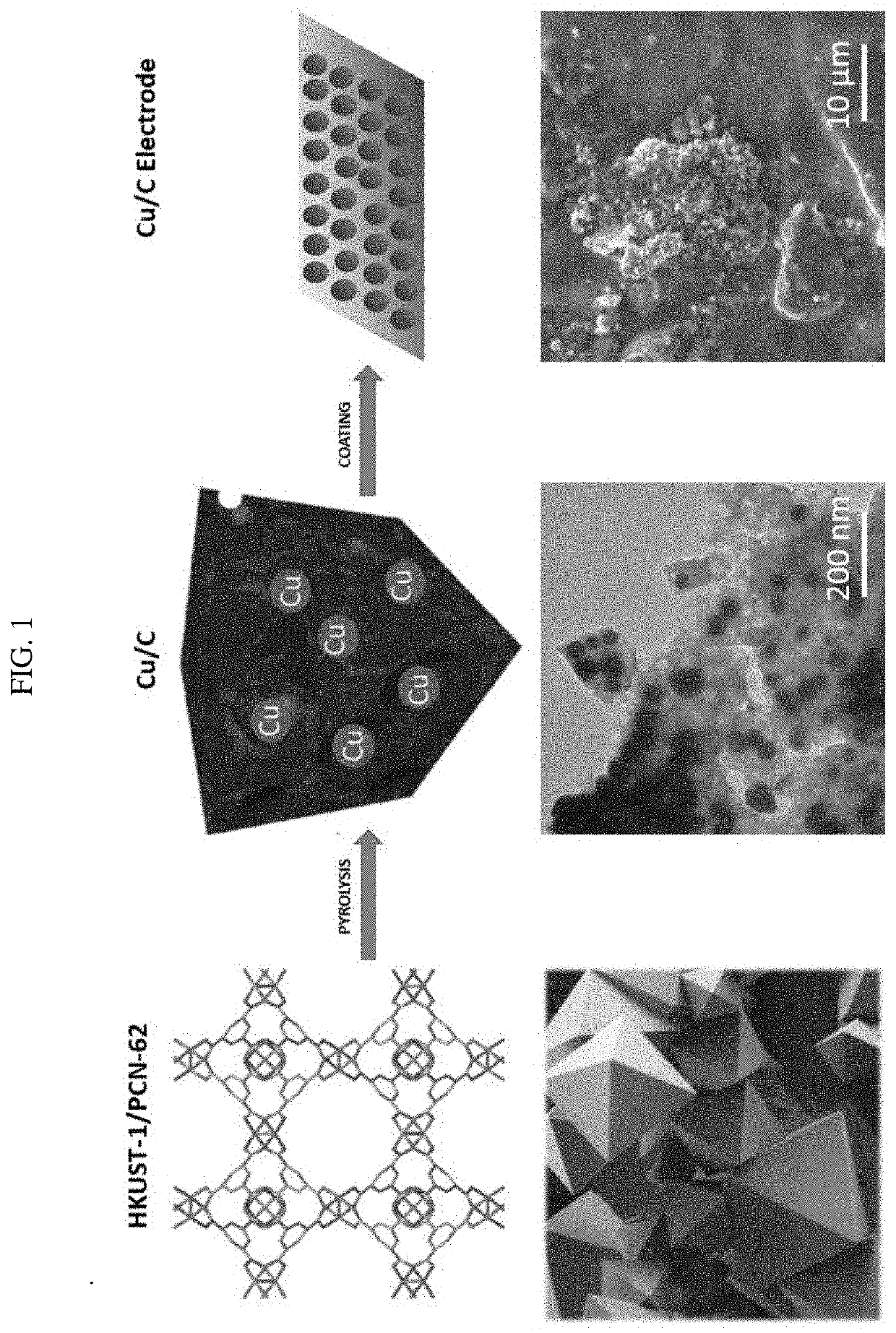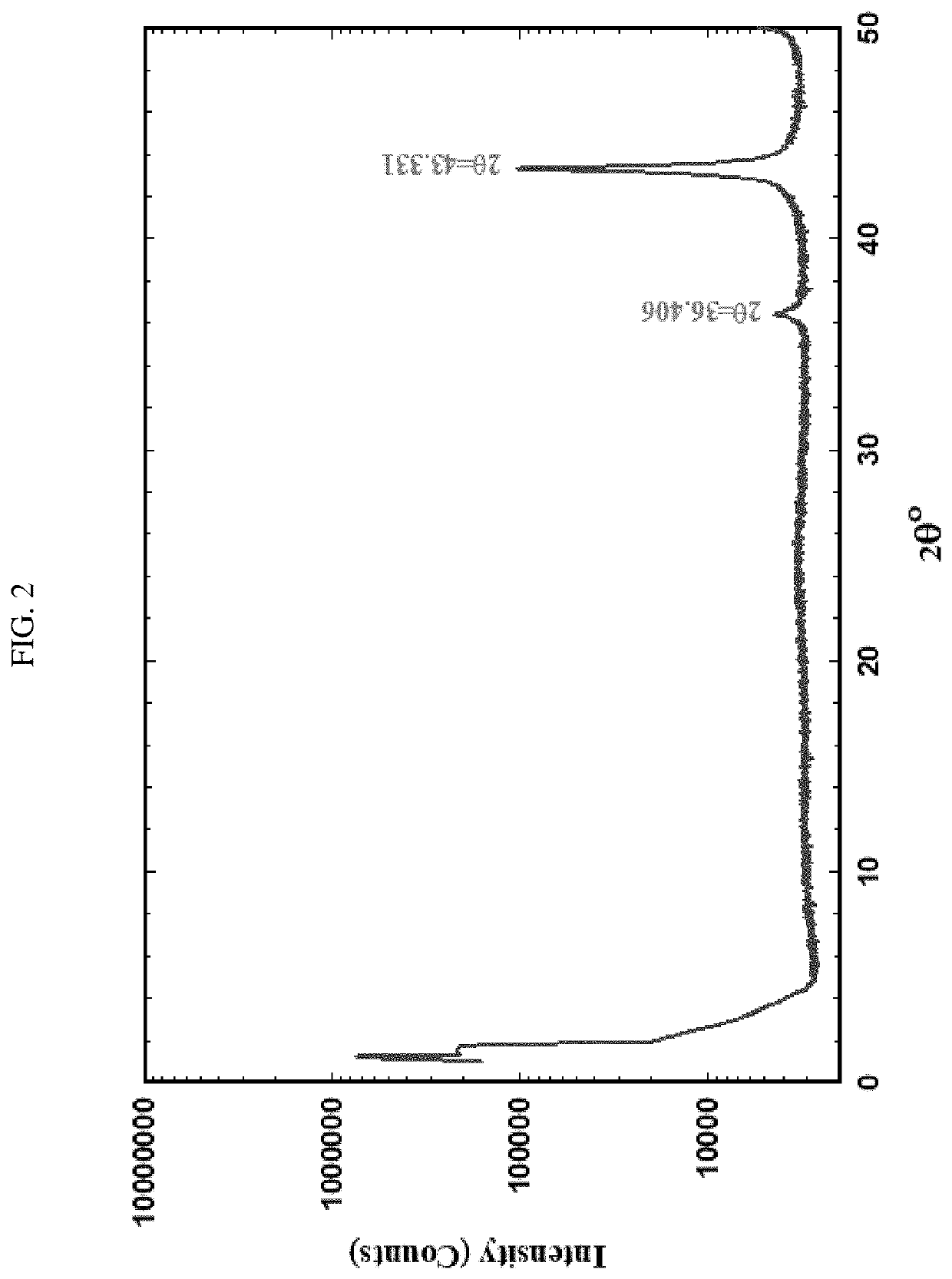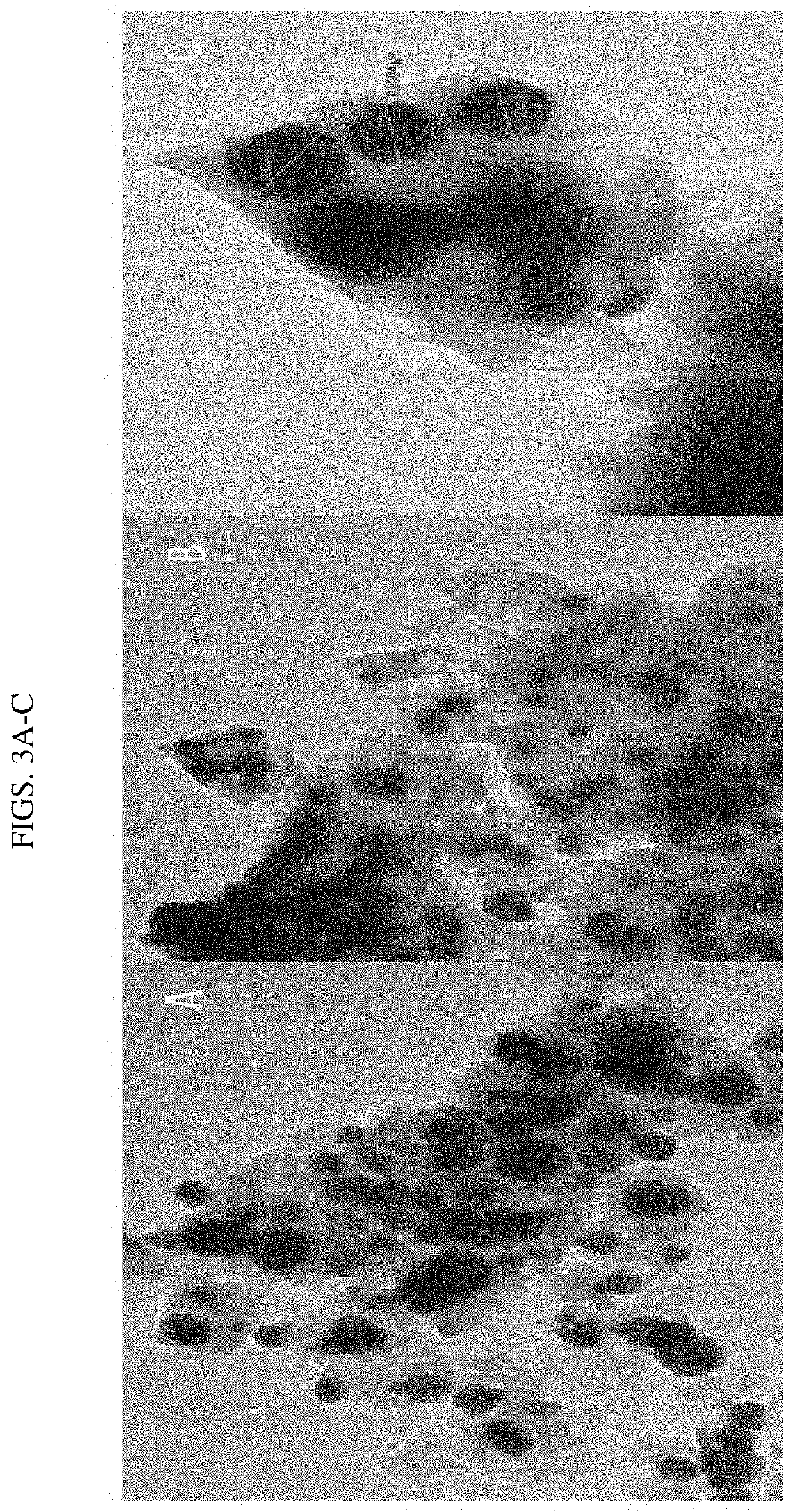Method of producing isopropanol from electrochemical reduction of carbon dioxide and related copper-based electrocatalysts
- Summary
- Abstract
- Description
- Claims
- Application Information
AI Technical Summary
Benefits of technology
Problems solved by technology
Method used
Image
Examples
example
Preparation Of Electrocatalysts, Ink Compositions, And Coated Electrodes
[0035]FIG. 1 is an illustrative schematic of the overall process of preparing the electrodes including pyrolysis of MOF precursors into a metal / carbon powder, and coating of a metallic support with an ink comprising the carbonized MOF (top row). Corresponding images of the MOF precursor, metal / carbon powder, and electrode ink coating are also shown (bottom row).
[0036]Pyrolyzed MOFs: Both HKUST-1 and PCN-62 were purchased from Sigma Aldrich (Millipore Sigma, St. Louis, Mo.) or prepared following literature procedures for use as catalyst precursors. Approximately 1 g of the selected MOF was placed in a ceramic boat which was pyrolyzed in a ThermoFisher Scientific Lindberg / Blue M Furnace (ThermoFisher, Waltham, Mass.) at variable temperatures (400-800° C.) under anaerobic conditions. Nitrogen gas purged the furnace at a rate of 10 mL / min. The carbonized powder product was visualized using transmission electron micr...
PUM
| Property | Measurement | Unit |
|---|---|---|
| Temperature | aaaaa | aaaaa |
| Temperature | aaaaa | aaaaa |
| Current | aaaaa | aaaaa |
Abstract
Description
Claims
Application Information
 Login to view more
Login to view more - R&D Engineer
- R&D Manager
- IP Professional
- Industry Leading Data Capabilities
- Powerful AI technology
- Patent DNA Extraction
Browse by: Latest US Patents, China's latest patents, Technical Efficacy Thesaurus, Application Domain, Technology Topic.
© 2024 PatSnap. All rights reserved.Legal|Privacy policy|Modern Slavery Act Transparency Statement|Sitemap



